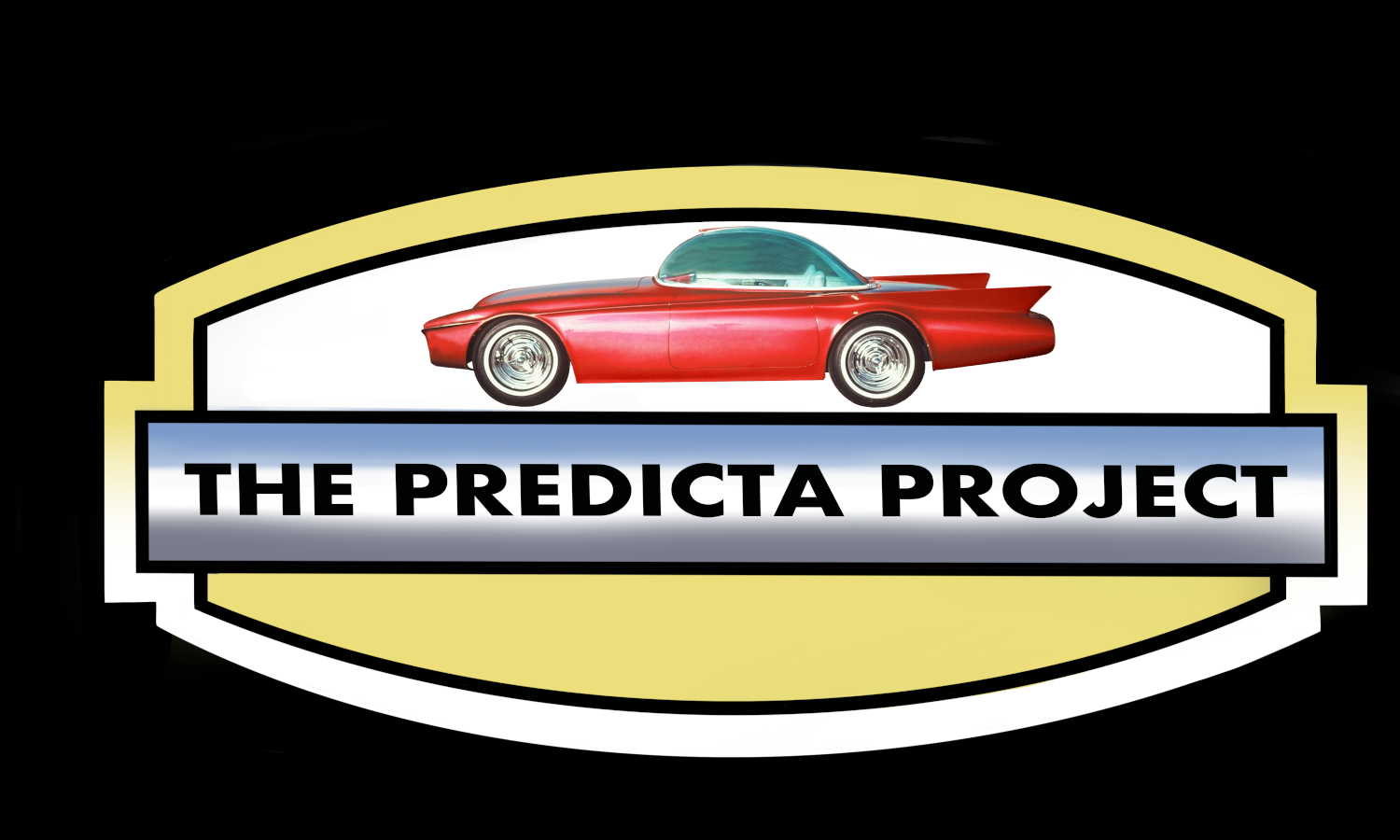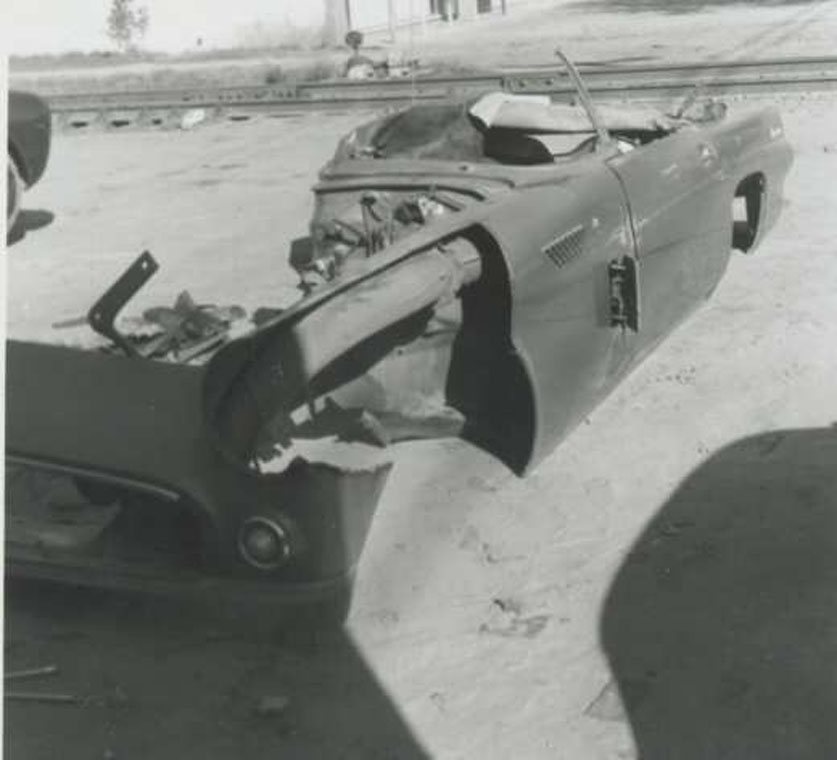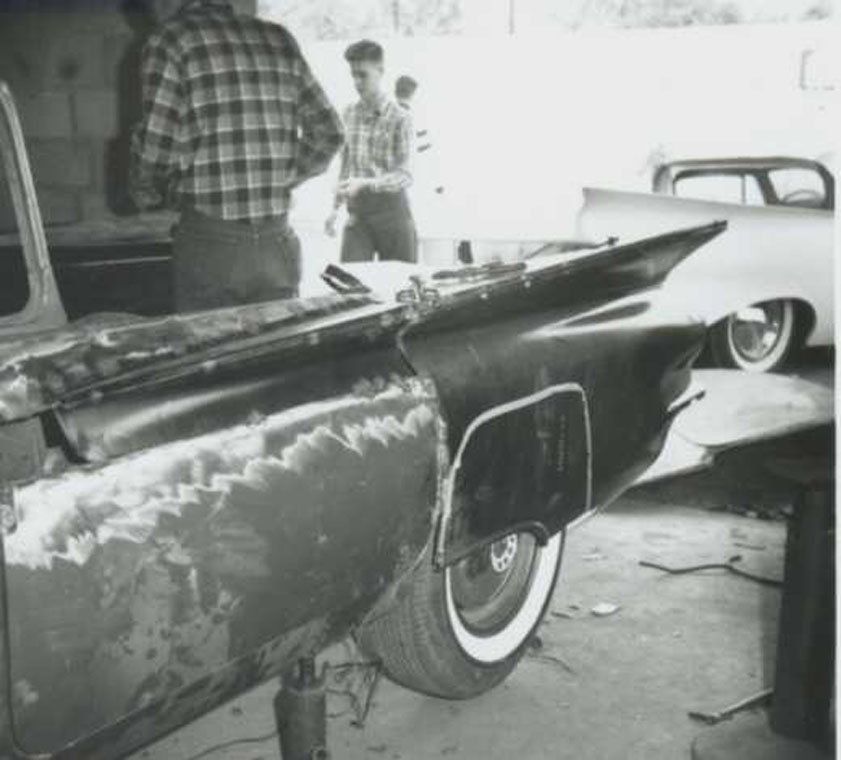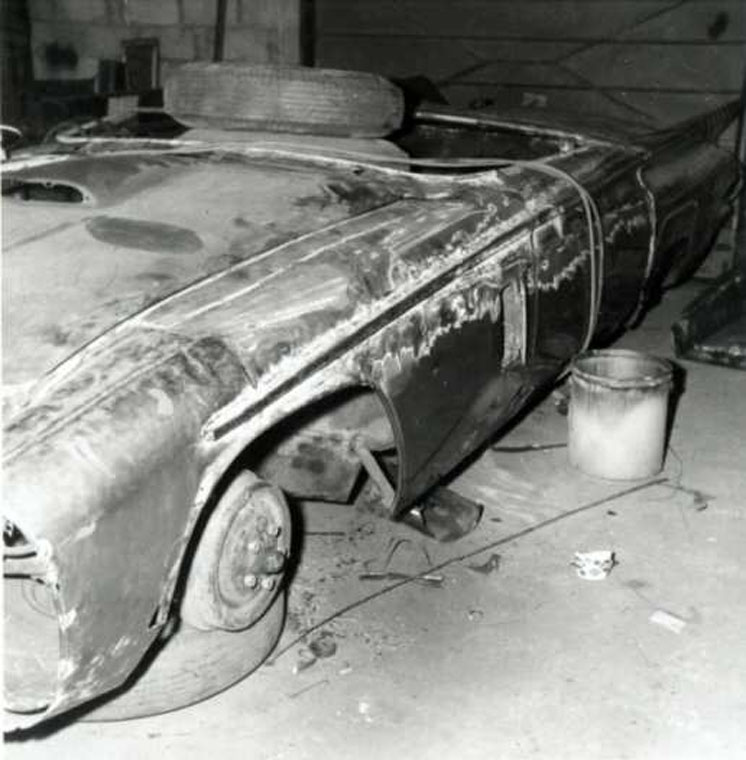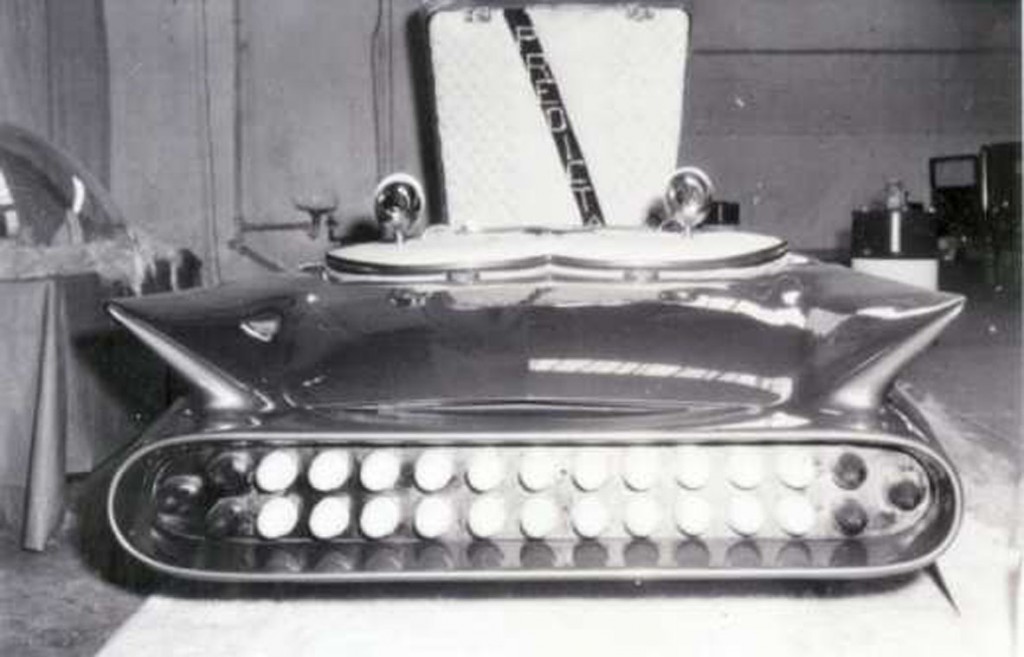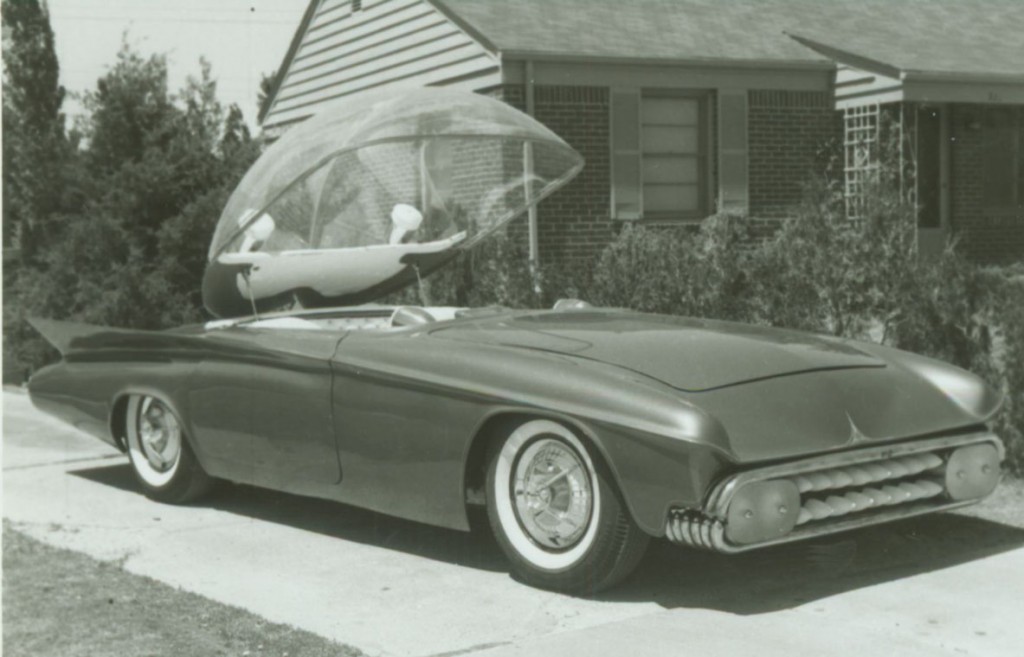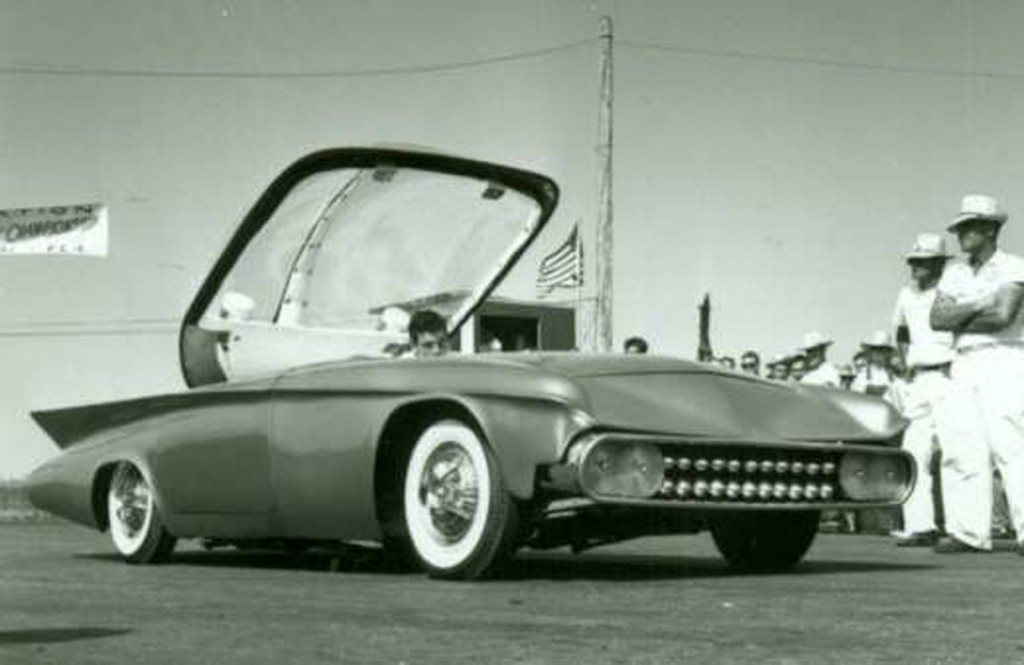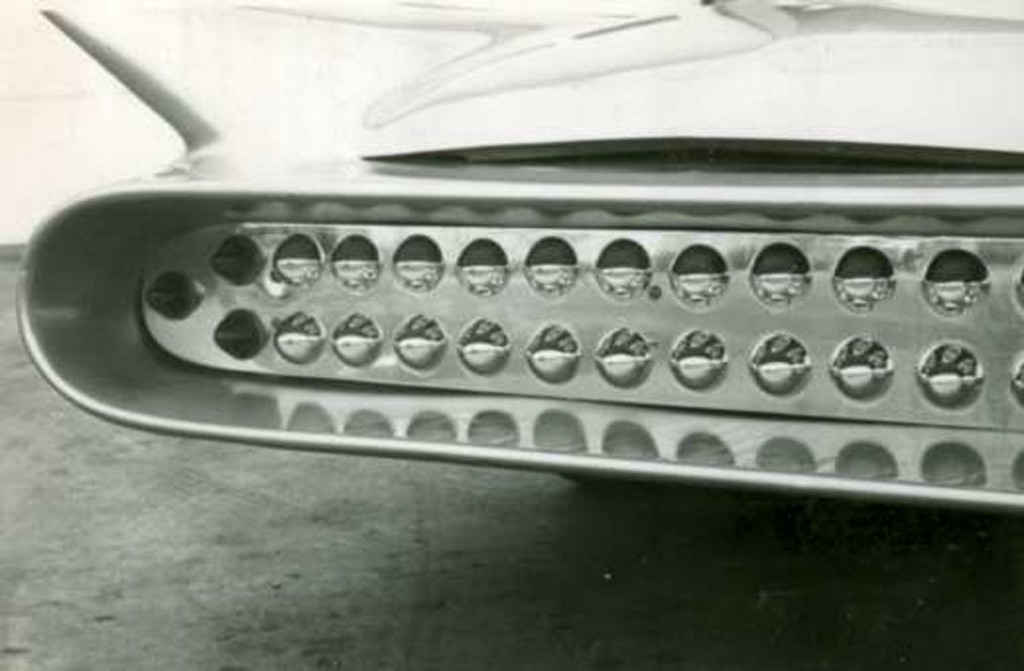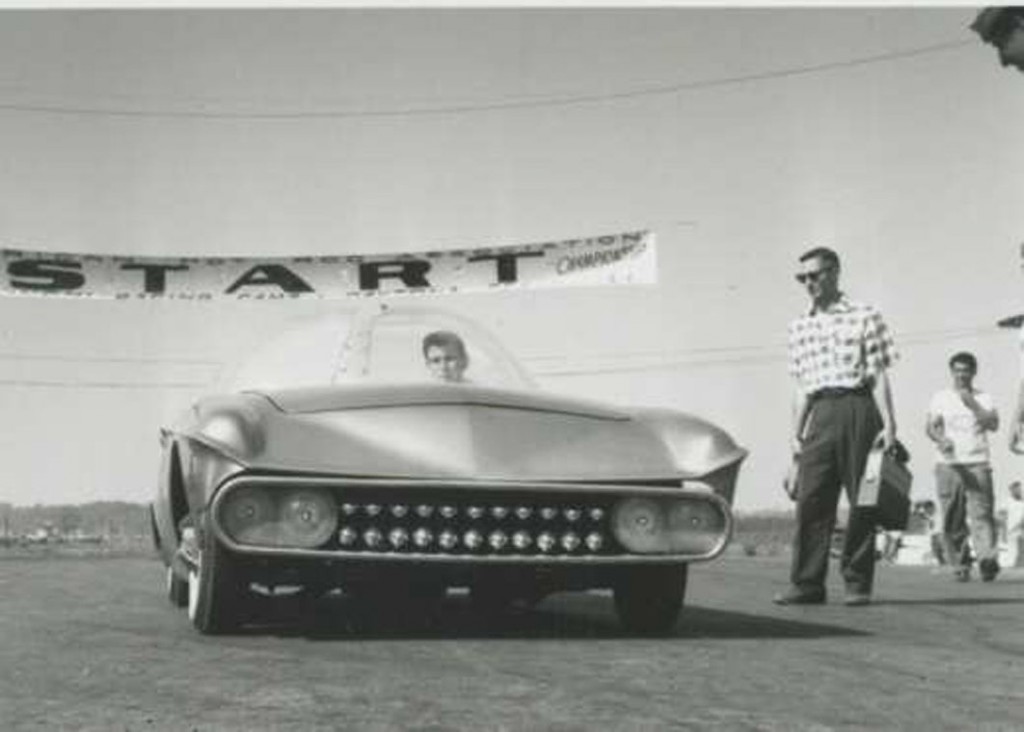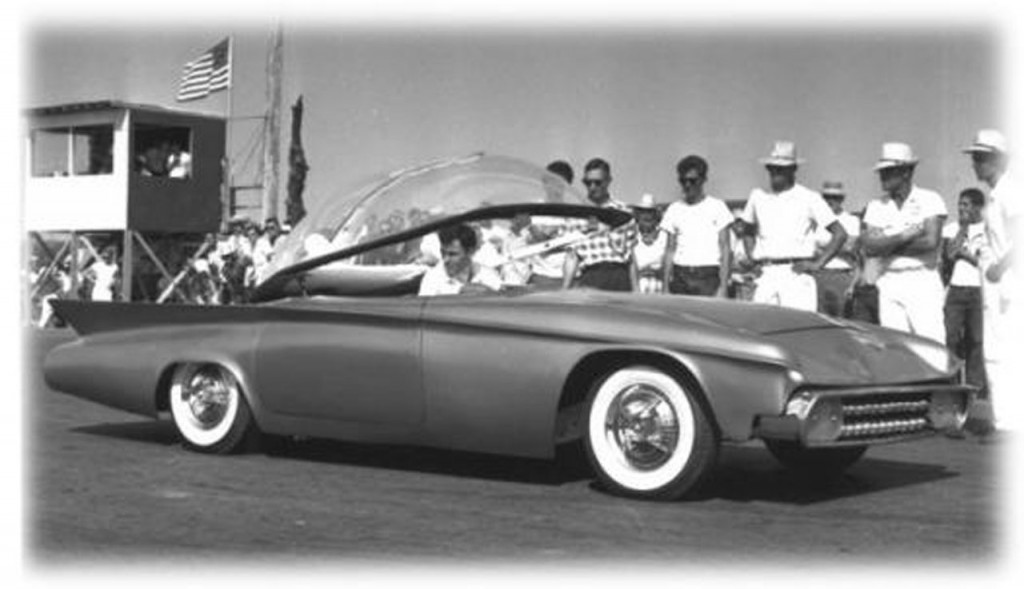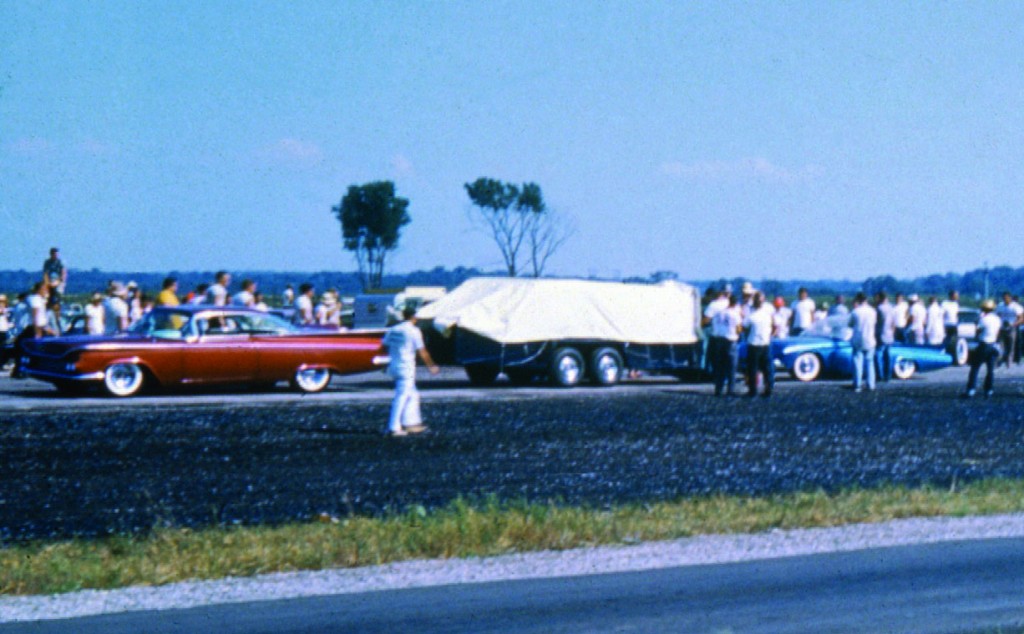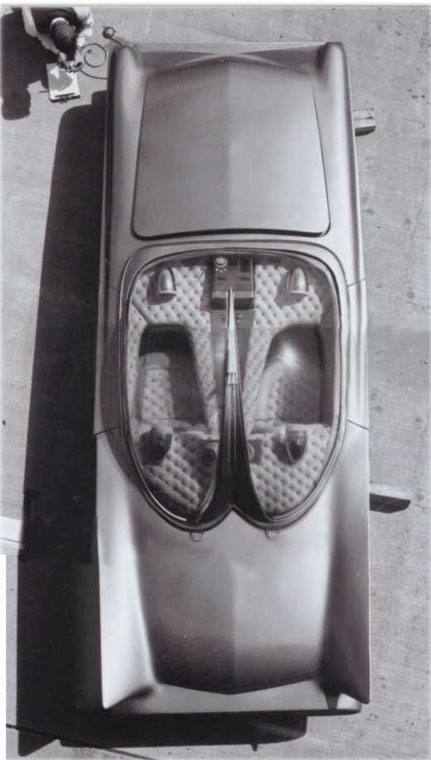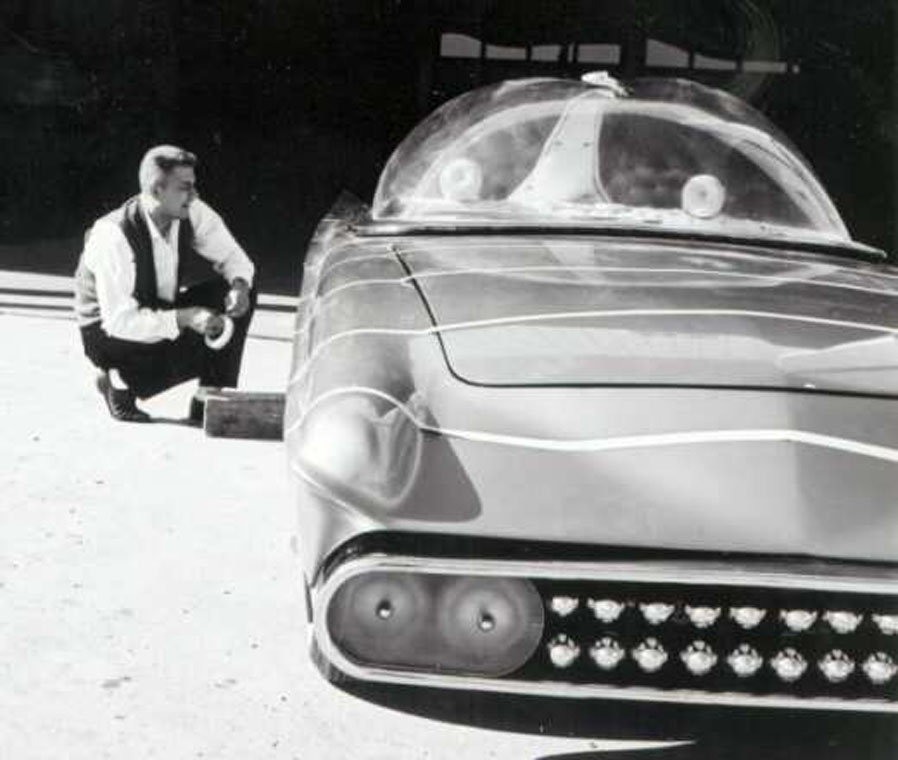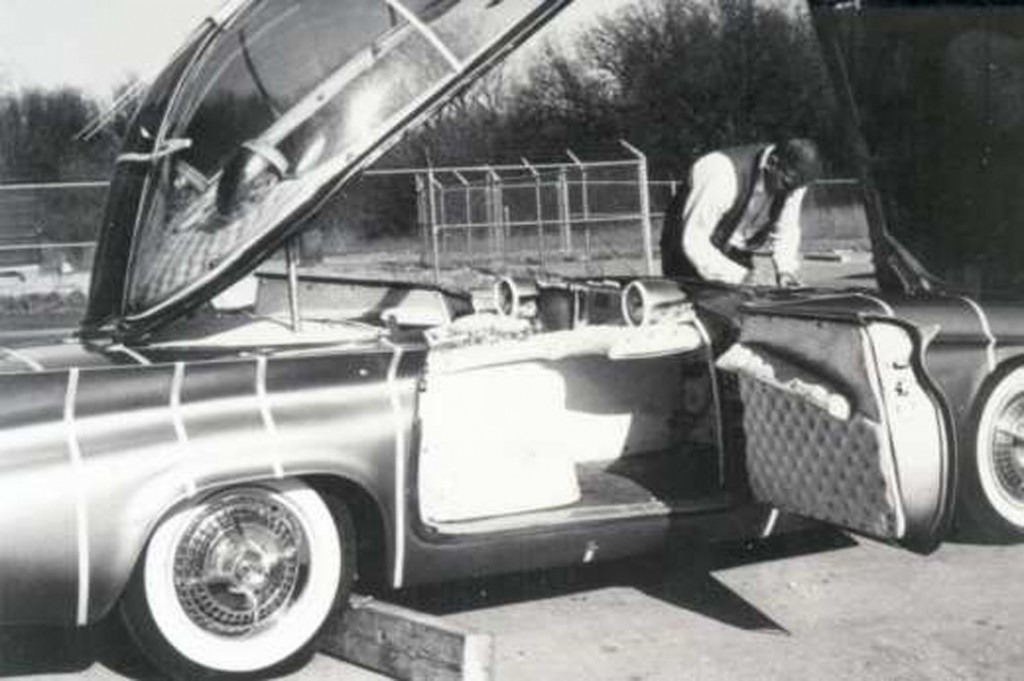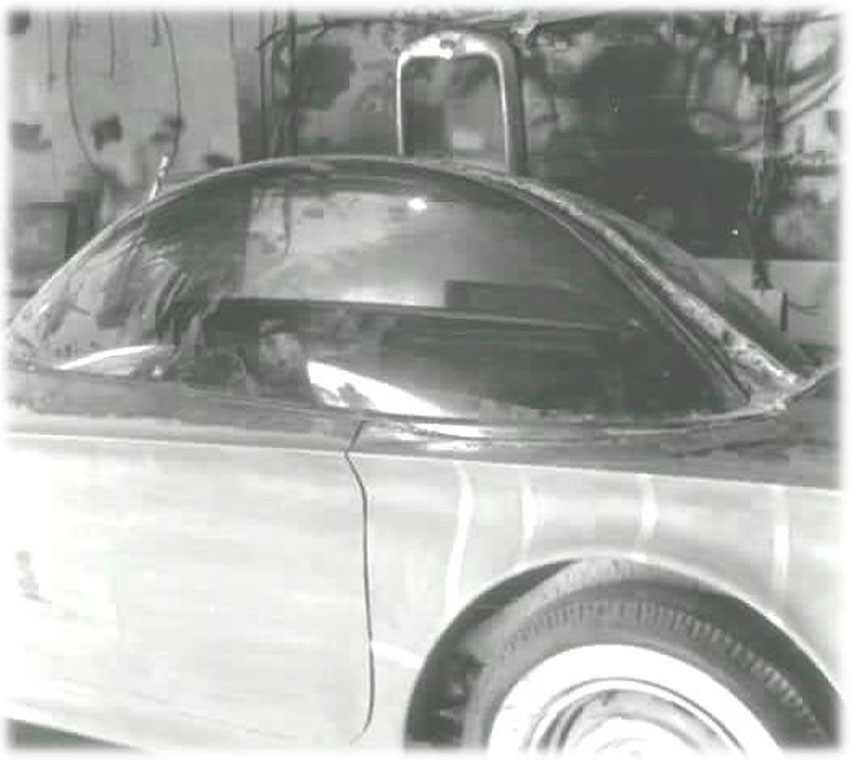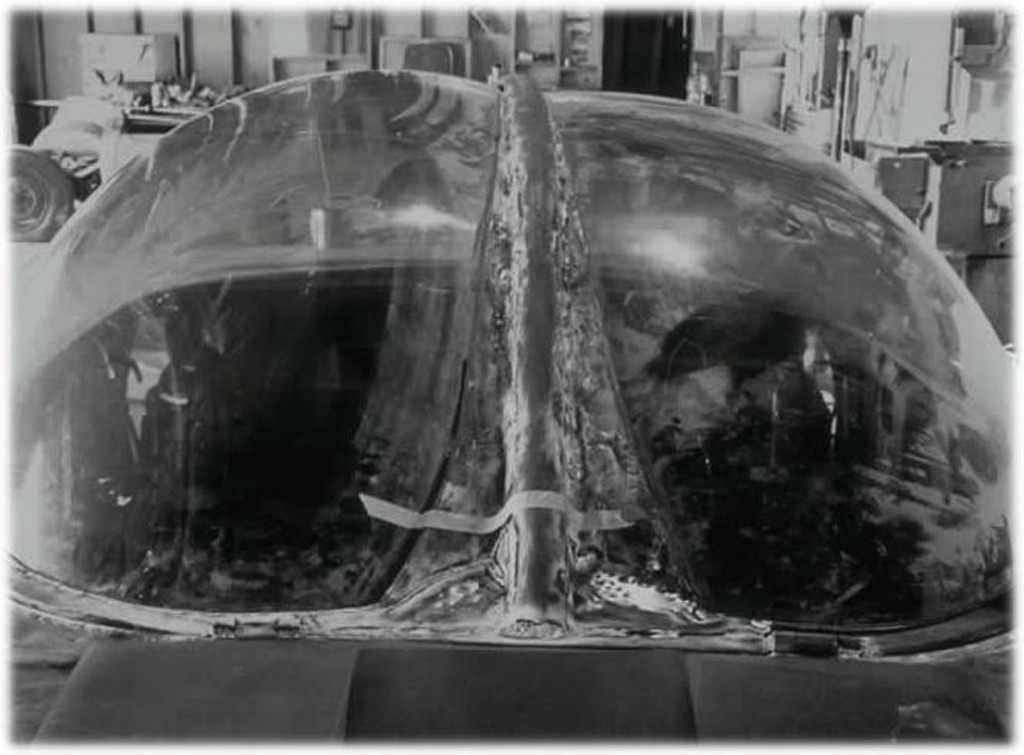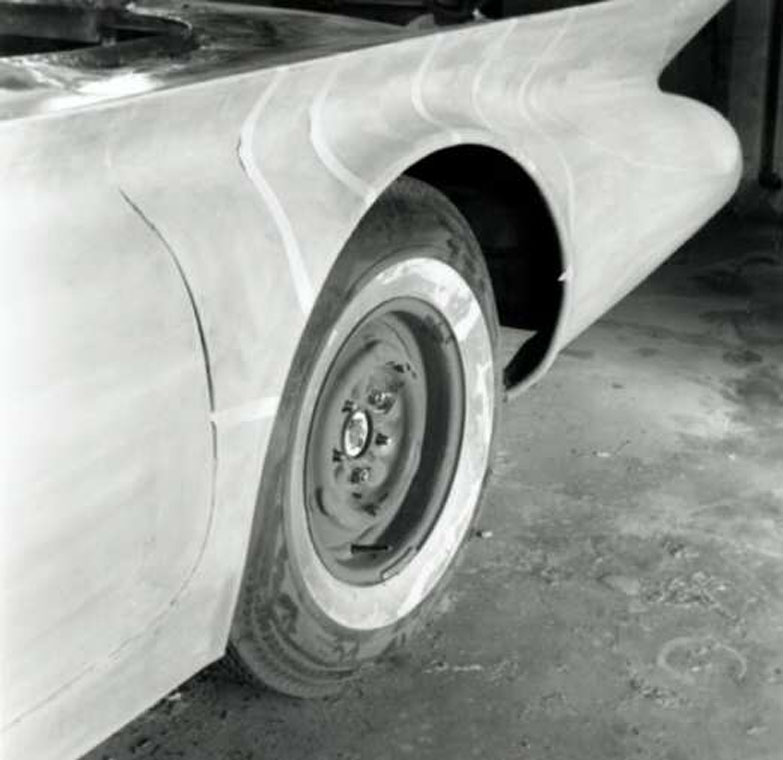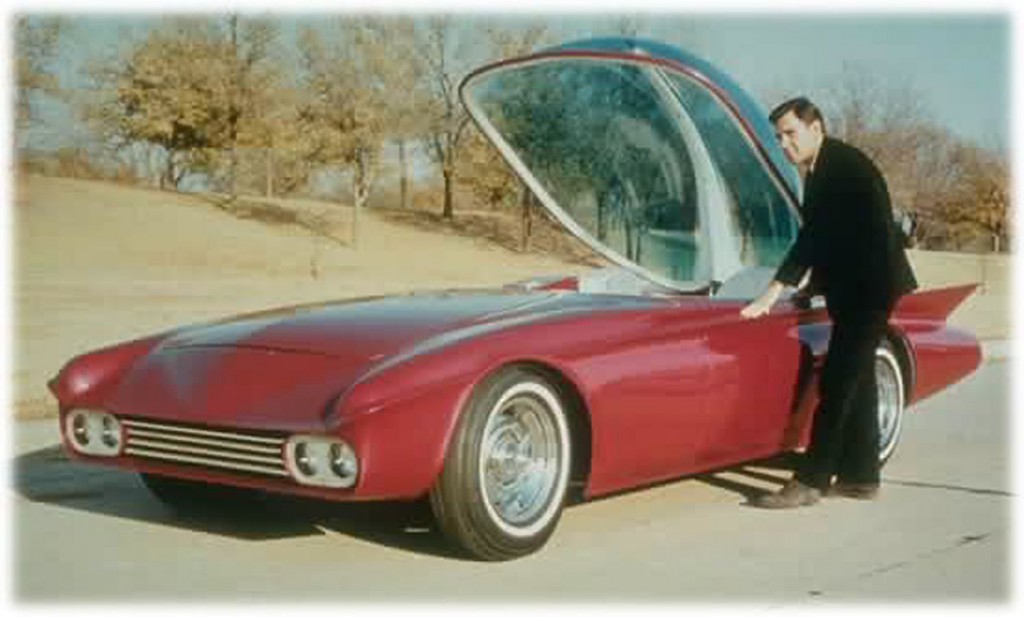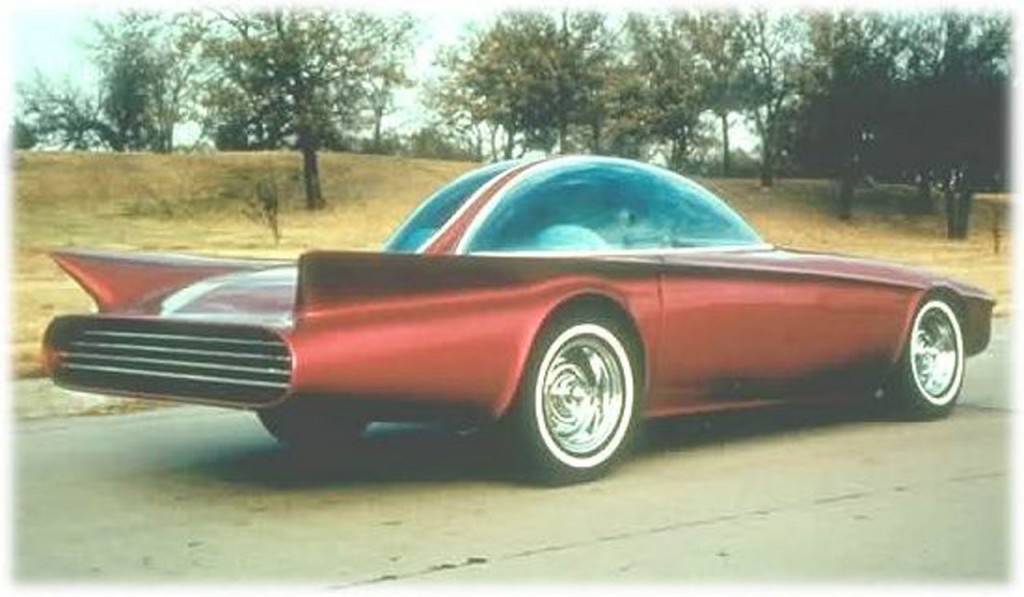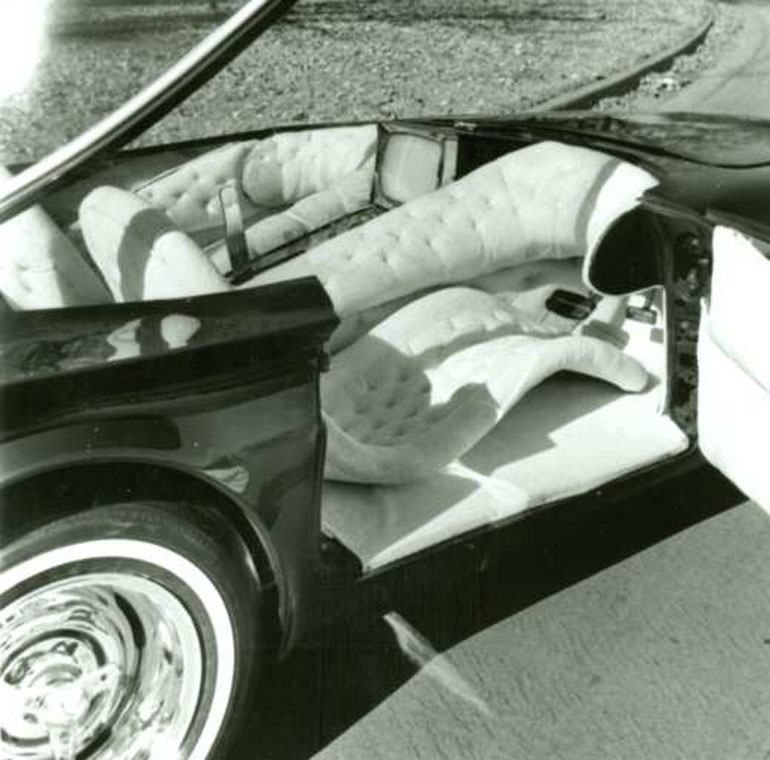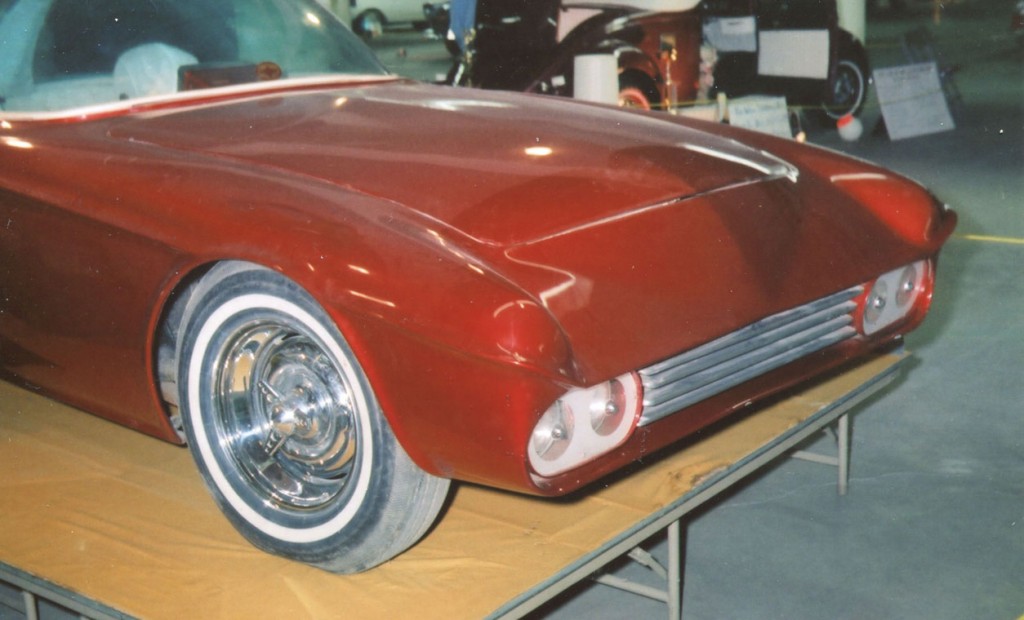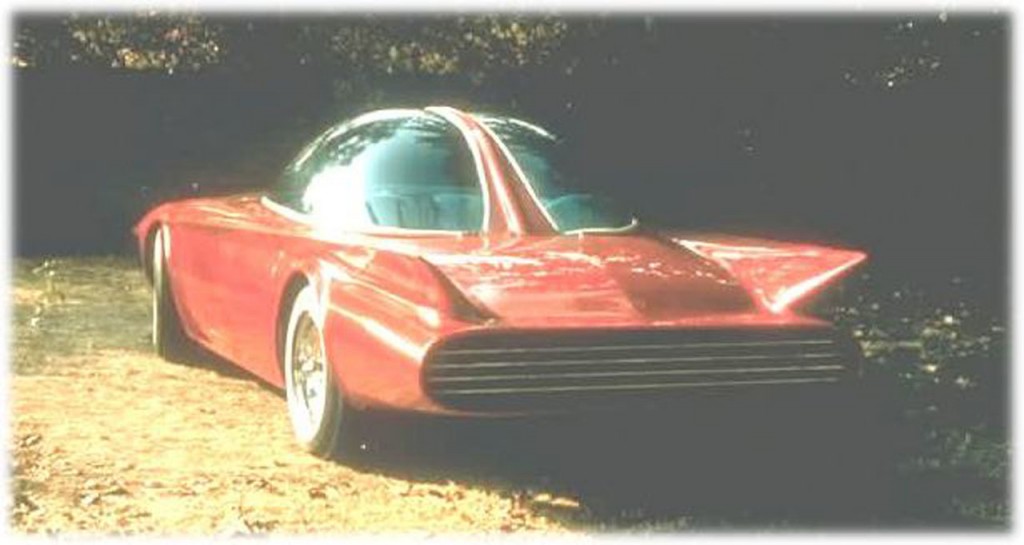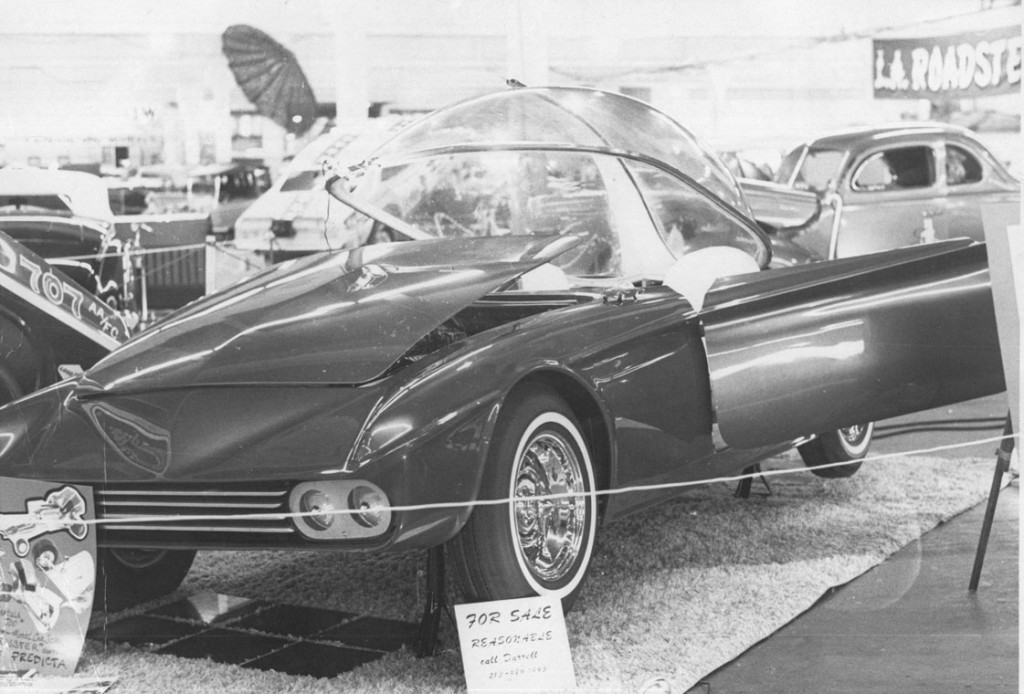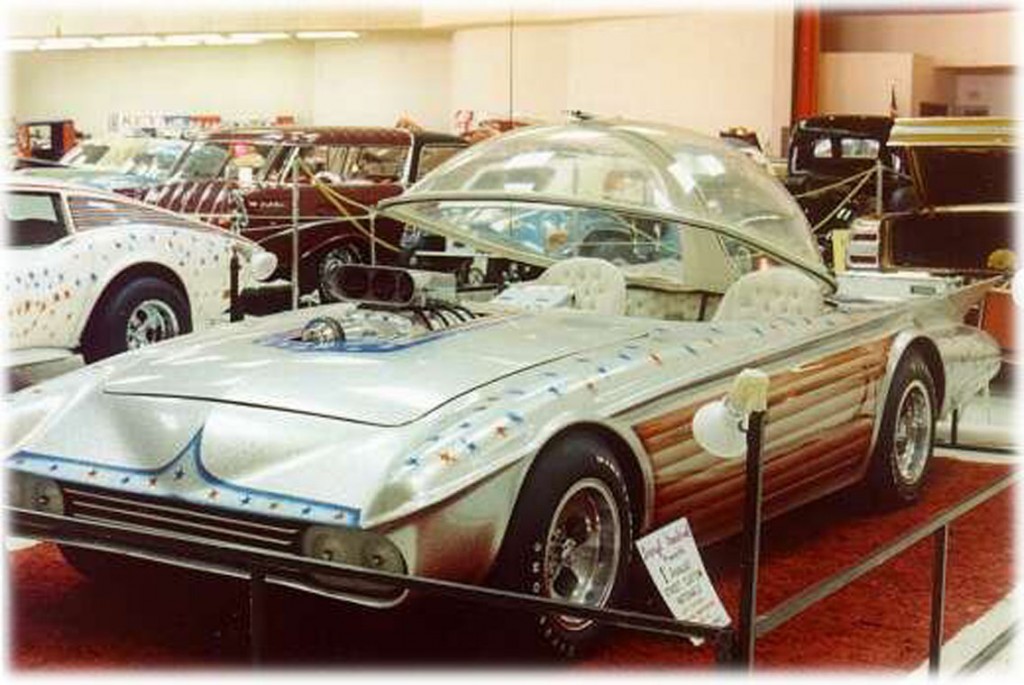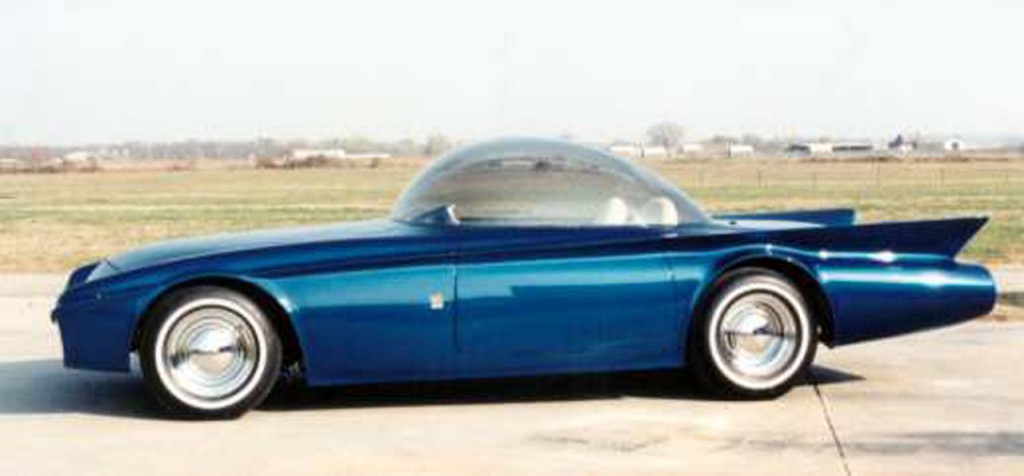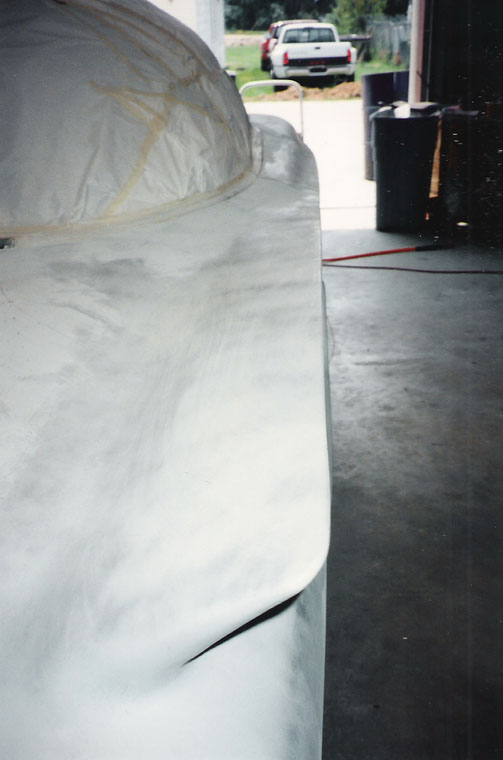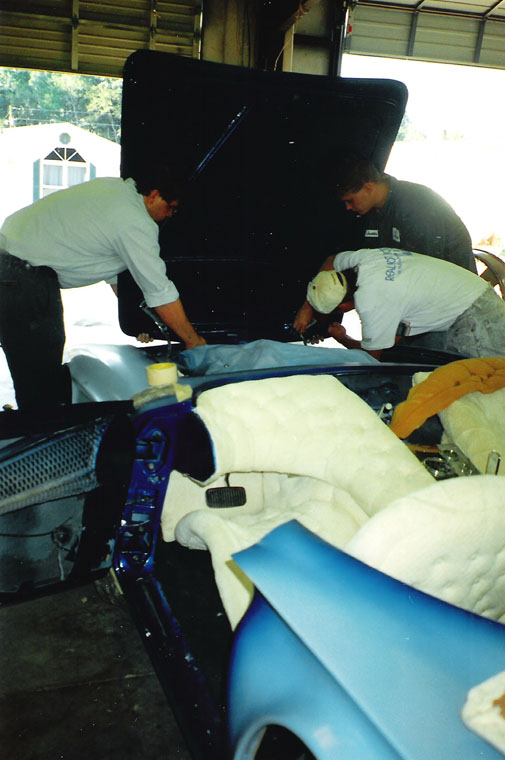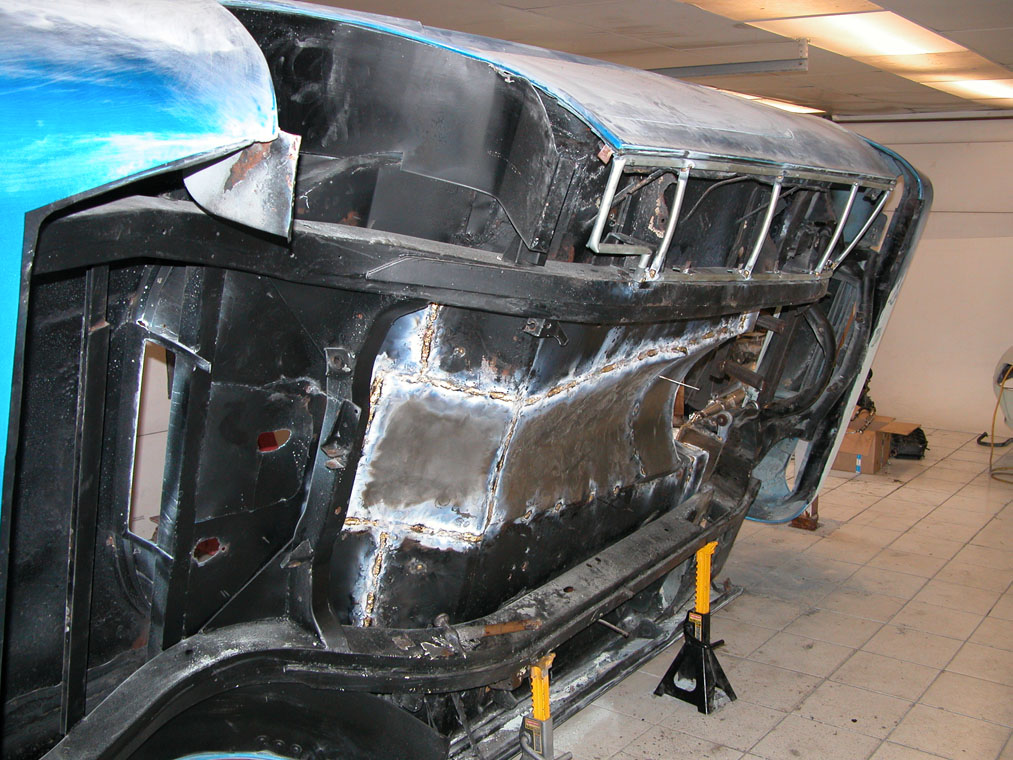Editor’s Note:
The following essay is a much-compressed early draft of a section from the book by author Mark S. Gustavson. The book will feature hundreds of photographs, and ten chapters and eleven Appendices (not to mention more than 110 footnotes) that will detail the wonderful and detailed history of Starbird’s signature bubble topped dream car. The author expresses his deep appreciation to Darryl and Donna Starbird for their decades-long cheerful cooperation and assistance in providing photographs, historical details, and technical information on the Predicta.
The author also gratefully acknowledges the following men for supplying photos for the book: Bob Barnett, Larry Bouldin, Jerry Eich Photo Collection, Don Elliott, Pat Ganahl, Phil Gardinier, Carl Green, Roger Harrney, Robert Hegge, Dick “Fuzzy” Fuerholzer, Rik Hoving, Bob Johnson, Bill Johnson, Gary Minor, Monogram Models, Clyde D. Paige, Bob Reder, Frank Rodriguez, Ray Soff Collection, Andy Southard, Frank Swareo, Richard Toonkel, Lee Vitale, and Darryl Zipp.
In the late Fifties, Darryl Starbird, then a newly-minted Mid-West, self-taught customizer, was given a commission by Bob Turgeon to build a custom ’57 T Bird for the show circuit. After weeks of hard work, Bob’s Le Perle made its debut on the circuit and was modestly covered in the custom car hobby press. Following the incredibly positive response to the award winning Le Perle, Starbird wanted to build another custom first-generation Thunderbird roadster which would reflect what he learned building Turgeon’s Bird.
Unable to afford a complete small Bird in good shape (remember, they were still relatively expensive in the late Fifties), Darryl located a badly-damaged car in a local Wichita junkyard and hauled it to his shop which was adjacent to the railroad tracks. What he hauled to his Star Custom Shop was barely a car, much less a Thunderbird, but it was the basis for one of the most famous and advanced custom show cars of the era.
Work started in 1959 when Starbird removed the many damaged factory panels and initially replaced some of the panels with used factory stock sheetmetal so that he could have a complete car to commence his work.
In a stroke of insight, Starbird welded two carefully-trimmed rear, outer sheetmetal panels from a ’59 Buick to the Thunderbird, leaving the shape of the doors essentially intact. The crisp edge of the new rear quarter fin was continued along the top of the door, and horizontally across the front fenders (just above the wheel wells), finally forming the upper lip of the front grille shell. In its initial version, the Predicta’s wheel wells were virtually in the factory shape, with a rolled edge at their upper extension. This design lent a sleek, space-aged “wedge” look to the car which anticipated factory designs by nearly three decades.
Once the shapes of the side of the car were roughed in, Starbird hand-formed the front fenders and headlight panel using steel tubing to define the shapes and vestigial rolled pan. With the headlight area defined by the tubing, Starbird used two first-generation Bird hoods, one in its expected place, and the other as the “trunk.”
Rather than entirely mold that “hood” into the trunk area, Starbird decided to try something unusual. The one-time leading edge of the “hood” was cut into a shallow “V” with either outside edge disappearing to a point inside of the root of the fins. This created a horizontal slot between the trunk panel and just above, and forward of, the rear rolled pan.
In the first version of the car, the front grille initially featured polished copper tubing, bent in a half circle to form the lower edge of the front grille. Dual, horizontally mounted headlights were added and fitted with frosted lenses, later to become a common custom technique. In the first three versions of the car, the headlight covers were entirely frosted (in the fourth Monogram and subsequent versions, Starbird only frosted those areas not directly in front of the bulbs). Between those headlights, Starbird mounted 26 white painted Caddy taillight lenses.
Turning his attention to the back of the car, Starbird populated the rear grille area with 28 more ’59 Caddy taillight lenses, 22 of which were painted white to render them opaque, and mounted on what appeared to be a piece of stained plywood! Three red translucent Caddy lenses (arranged in a triangle) were placed on the extreme outer left and right areas of the grille panel which permitted functional taillights.
But perhaps the most striking feature of the car was its bubble top. Blown from clear Lucite, it echoed the clear canopies on numerous show cars that Ford and General Motors had built in the Fifties, commencing with the ’54 GM Motorama cars and Ford’s Lincoln Futura. “Freeblown” without a female fixture to define its shape, the bubble top was attached to a mounting ring with small screws which, in turn, was attached to two hinges bolted to the body. To trim the mating interface between the ring and the top, Starbird used a white filler cord carefully pressed into the gap between the bubble top and the mounting ring. Starbird fit a windsplit to the bubble top which curved inward to the curve of the top, and featured twin antennas at the horizontal, leading edge.
Starbird did not forget creature comforts when he built the Predicta. The interior appointments consisted of upright bucket seats, dual cantilever dash pods and other items upholstered in white pearl Naugahyde buttoned by rhinestones. The white interior and brilliant metallic blue body contrasted with bright red carpets. Brass-plated instrument pods faced each driver, and a defroster vent appeared just rear of the seats to clear moisture from the inside of the bubble. In what was to become a real trend, Starbird mounted a television set forward in the passengers’ compartment. Finally, a speedometer, ignition and light switches and other controls were mounted on the chromed console panel between the seats. Everyone noticed that there was no steering wheel because Starbird fabricated and installed a “tiller” steering system: Capable of being steered from either seat, the car could be directed by pushing or pulling on a chromed rectangular shaft that emerged through a chromed panel between the seats. That steering shaft was connected to a ’56 Thunderbird steering box flipped on its side, which in turn actuated a full time power steering unit from a ’57 Chrysler connected to the steering crosslink. The car could be driven from either seat, since both sides of the passengers’ compartment had gas and brake pedals. Despite the lack of power assist, Starbird reports that the car was easy to steer, even at low speeds.
To provide motion, Starbird fitted a beautifully-detailed fuel injected Chrysler Hemi engine to the pearl white painted frame rails. Virtually every removable part on the engine was plated, as well as the fan shroud, shocks, control arms – – you name it. The engine compartment was also modified. A full-width chrome firewall was installed, to replace the factory firewall that had been entirely removed, and new inner wheel wells were fabricated with three gauges in the left inner wheel well to aid in engine tuning. The factory T-Bird rear axle and leaf springs were retained and a Chrysler automatic transmission and shortened drive line tied everything together.
After a bit less than two months of intensive and uninterrupted construction Starbird completed the car and promptly trailered it to California where it was displayed at the 1960 Oakland Roadster Show. However, the bubble top had not yet been fitted to the car since the hectic building schedule had not permitted it to be fit to the car at that date. At the Oakland show, the bubble top was displayed just to one side of the Predicta throughout the 10-day show, when the Car Craft feature was shot.
The Predicta was an instant hit. It appeared on the cover of Car Craft, and Motor Life anointed the car as one of the Top 10 customs for 1960.
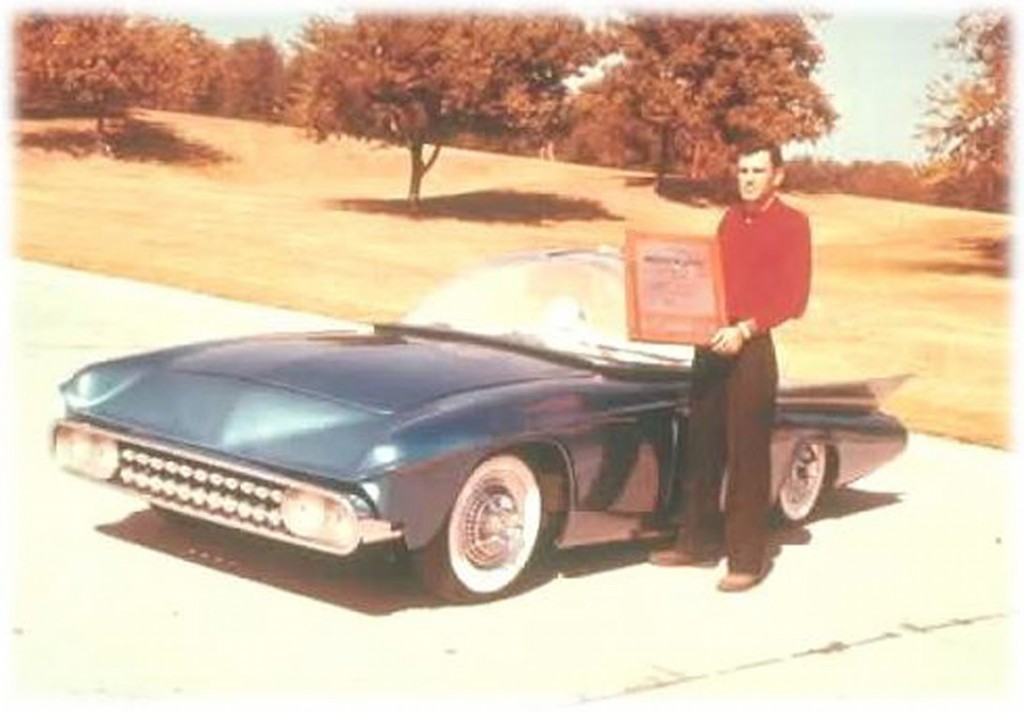
A careful examination of the color cover shot of the August 1960 issue of Car Craft reveals that the bubble top in that photo had been airbrushed on, it had no windsplit, and the shape was obviously incorrect. Once the show was over, Starbird took the car to Bill Cushenbery’s shop in Monterey, California where the actual top was fitted by Starbird.
As with most of the famous customs of that era, the Predicta went through several versions briefly described here. A few months after its Oakland debut, Starbird restyled the front grille by dropping the copper tubes and replacing them with a chrome band that defined the opening. Sensing that the front grille was too “busy,” Starbird replaced the front mounted Caddy lenses with more stubby round chrome bullets.
Additionally, Starbird replaced the inset wooden taillight panel with a flat chromed metal insert to which the original Caddy lenses were again placed. A year later, a third version of the car would be seen as Starbird replaced the rear Caddy lenses with a phalanx of the same chrome bullets that were installed in the front grille. However, the first two “versions” of the Predicta retained the original Plymouth blue paint that Starbird has described to me as the ideal color for the car.
The car was not just another candied show cruiser. To meet some criticism, Starbird showed up with the car (in its second version) at the 1960 Kansas City AHRA National drag meet, and drove the Hemi powered show car down the strip with the top in place. The timing lights revealed that Starbird hit a measured speed of 101 mph, and with tiller steering! So much for the critics.
As things go, Starbird decided to use the car for everyday transportation and to advertise his growing and successful shop. After several years of such use, the Predicta was getting a little long in the tooth. Dents, chipped paint, soiled upholstery and a musty frame really started to bother Starbird. As if to answer his concerns, in late 1962, Robert Reder, from Monogram Models, called to ask if he would sell the car to Monogram so that a 1/24 scale model kit could be offered. In the process, Darryl was asked to restyle the Predicta, and paint it a bright cherry red so that it would have maximum appeal on the custom car show circuit. The car, in its third version, was shipped to Monogram so that engineers could measure its contours and dimensions in preparation for the production of the kit.
When the principal information was obtained, the car was trailered back to Starbird’s shop, where he completely disassembled the car by removing the interior, the grille work, and sanded the paint down to the original metal work. Importantly, this job was made easier because Starbird didn’t use lead or plastic filler when he originally built the car, thereby keeping faith with those earlier coach builders whom he admired.
The restyling was significant. First, the bubble top was slightly reduced in height and length, and rounded at the point where the new “ring” hinged to the body. The first bubble top was noticeably higher and longer than the second one.
Additionally, the top was pulled closely to the passengers by recessing the ring into the body work (and creating a flare around the opening). Where the top once perched on top of the car in its first, second and third versions, the fourth version of the car found the retaining ring fitted into the body in a formed channel cut into the cowl, both doors and the rear body. This resulted in a much cleaner and more streamlined appearance. To reflect the sleeker new style, the fresh windsplit was more sleek, though the new version retained the dual antennas.
Additionally, the wheel wells were radiused into rounded openings slightly interrupting the character on the front fenders.
Those wheel wells flares were connected by a very subtle rolled bottom edge to the front fenders and the rocker panels but not onto the front grille shell that was rolled under the headlight assembly that now lost the chrome bullets in favor of polished aluminum rectangular grille bars.
The rearward edge of the “trunk” was cut down and molded into the body which greatly cleaned up the design. Starbird also peaked the trunk and hood to add a subtle measure of grace to the car. A full width red Plexiglas taillight panel now filled the rear grille area, onto the front of which chromed rectangular bars were mounted horizontally. The taillight only showed through the extreme left and right corners.
In response to Monogram’s direction, Darryl laid on a breathtaking metallic red paint job over the newly-smoothed lines of the Predicta.
Deeply reversed chrome wheels, with spinners, were now mounted on tires sporting thinner whitewalls. The interior also benefitted from the restyling. Wildly reclining seats were installed, the red carpet was deleted and replaced with white, and the odd dual instrument pods were removed. Overall, this version of the Predicta is the best, and the one most remembered.
The car was then delivered to Monogram for promotion of the kit. In early 1964, a “sort of”accurate model of the car was issued in 1/24 scale. Produced in the United States until 1969, and again for a two-year period in the late ’70s in Australia and New Zealand, hundreds of thousands of eager model builders (including the author) built many scale versions of this most famous custom. Other than the 1990 re-issue, each kit box showed the car in red, and the third through the fourth-version box lids had an actual photo of the car reportedly taken at the 1964 New York Auto Show, though the foreign box lids did not do justice to the car’s color. When in the ownership of Monogram, the car was not always well cared for or even kept clean.
In 1969, Monogram decided to liquidate the car. In the pages of the June 1970 issue of Model Car Science, then a popular element of the model car hobby press, a contest was announced the winner of which would be awarded the car. Curiously, the Monogram (fourth) version of the car was not shown in the contest promotional photos, rather, the third version was featured. Nevertheless, several issues later, the magazine announced that the Predicta was won by Darrell Zipp, the lead design engineer who worked for competitor Revell, Inc., a West Coast purveyor of scale model car kits!
After weeks of working out the details of delivering the car from Monogram Models (who were stunned that an employee of a competitor had won the car), the Predicta was finally sent to Darrell: it was loaded on a trailer and was delivered by a Monogram employee!
Imagine the sight of the Predicta being towed to California from Illinois! Darrell displayed the Predicta at several California custom car shows, and eventually traded it for a motorcycle.
After that, American Chopper, in Los Angeles, ended up with the car. During their ownership, they painted it metalflake silver (Starbird later applied the then-popular American flag graphics to make it interesting to the show crowds). Not content to burden the car with that awful paint job, that third owner cut a large hole in the hood and mounted a huge GMC blower on the Chrysler motor! Several years later, probably in 1971 during a trip to the West Coast, Starbird happened upon the car at American Chopper. It was in poor condition. The awful paint had faded, the bubble top had cracked, and there was other damage. Starbird struck a deal to buy back his treasured car, and then trailered it back to Kansas. Once there, the Predicta was briefly shown by Starbird in one of his well known shows after which the car went back into his shop for a full restoration.
The many coats of paint were removed, the rare T Bird hood was repaired, and other changes were made: He deleted the bubble top wind split, repainted the car candy blue, and mounted wide tires on chrome mag-type wheels.
In this condition, it was again campaigned by Starbird at his shows for several years, until being retired where it rested, unseen, for almost a decade. Finally, Starbird modestly redid the car again for the 1989 KKOA Leadsled Nationals. Off came the street machine tires to be replaced with near-narrow replicas of the wheels and tires of the Monogram days. The car was repainted again, and a two barrel carb was fitted to the Chrysler Hemi engine for driveability. Everyone knowledgeable about the car, as well as custom neophytes, were thrilled to see it at the Leadsled event, after which it has appeared in several cable TV shows featuring all of Starbird’s cars.
1996 Rejuvenation!
In 1996, and in anticipation of the public debut of his Rod and Custom Hall of Fame Museum, Darryl knew that he didn’t have the time to substantially refresh the car. So, he trailered the car to famed customizer Carl Green (who had previously principally restored the badly-damaged Murray Dream Truck) for fresh bodywork, paint and upholstery. This was a fascinating period in the car’s history since it was the only time that the car was worked on – by someone other than Starbird and with his approval. An exhaustive presentation of Carl’s restoration of the car will be presented in the book. In the meantime, check out these great Green-restoration photos to whet your appetite. Photos courtesy of Carl Green.
2007 Restoration!
In anticipation of his fiftieth Wichita show, Darryl disassembled the Predicta so he could rebuild and show-detail the car. This was no half-hearted effort – literally, everything on the car came apart: the doors and hood were removed, the drive train came out, the 1964 bubble top splitter was installed again (for the first time since the mid-Seventies), and the interior components (seats, upholstered dash components, carpet and the like) were removed to facilitate floorboard repair (which amounted to full replacement). Then, cosmetic panels were placed between the inner rockers and the outer frame rails, the original “transmission tunnel” floorboard was removed and replaced with a shaped panel to bring this area of the car up to show standards. And every other part was refurbished. Here are just a few of the many restoration photos graciously shared with The Predicta Project by Darryl and Donna Starbird (many thanks, my friends!) that will be featured (along with dozens more) in my forthcoming book.
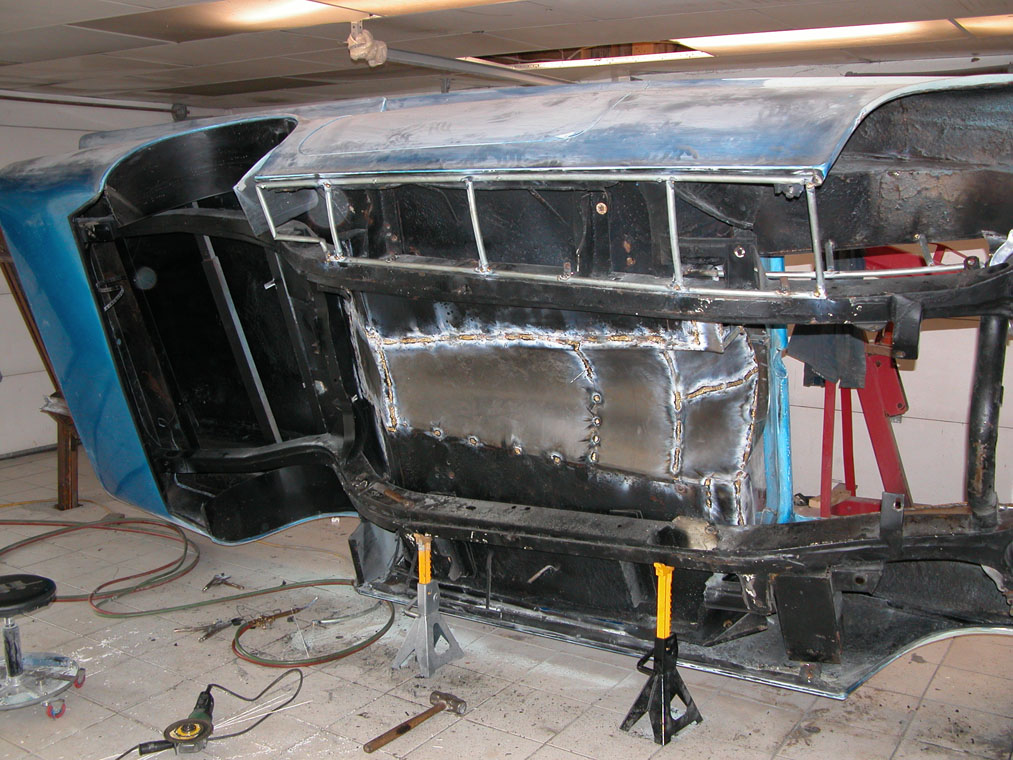
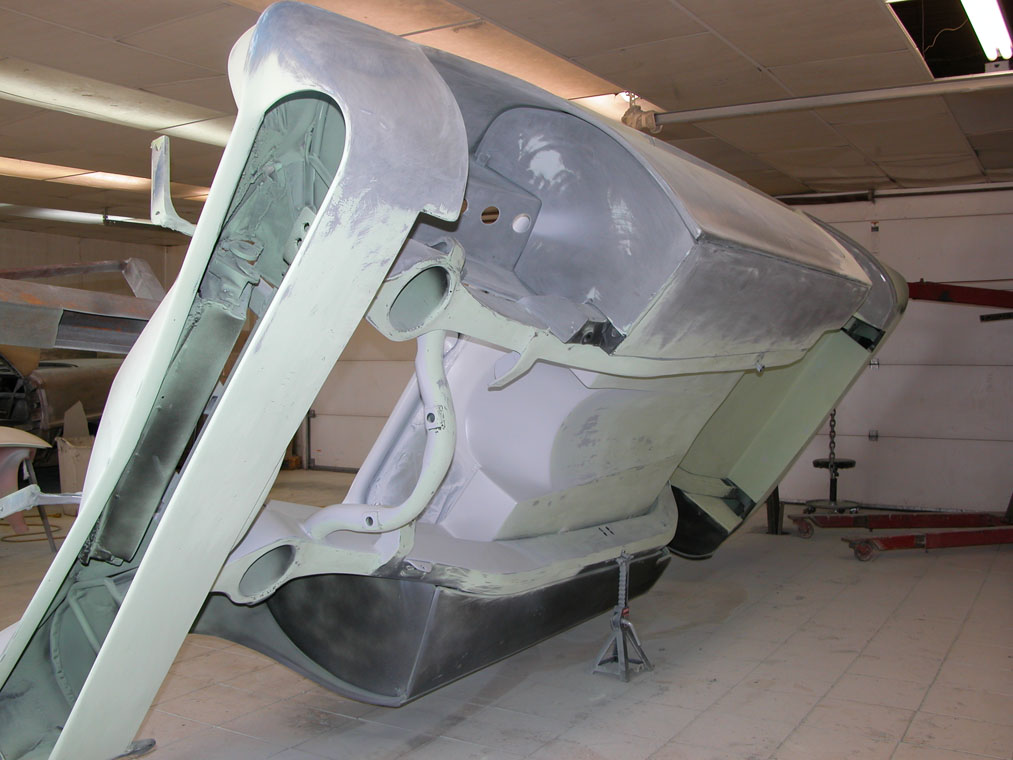
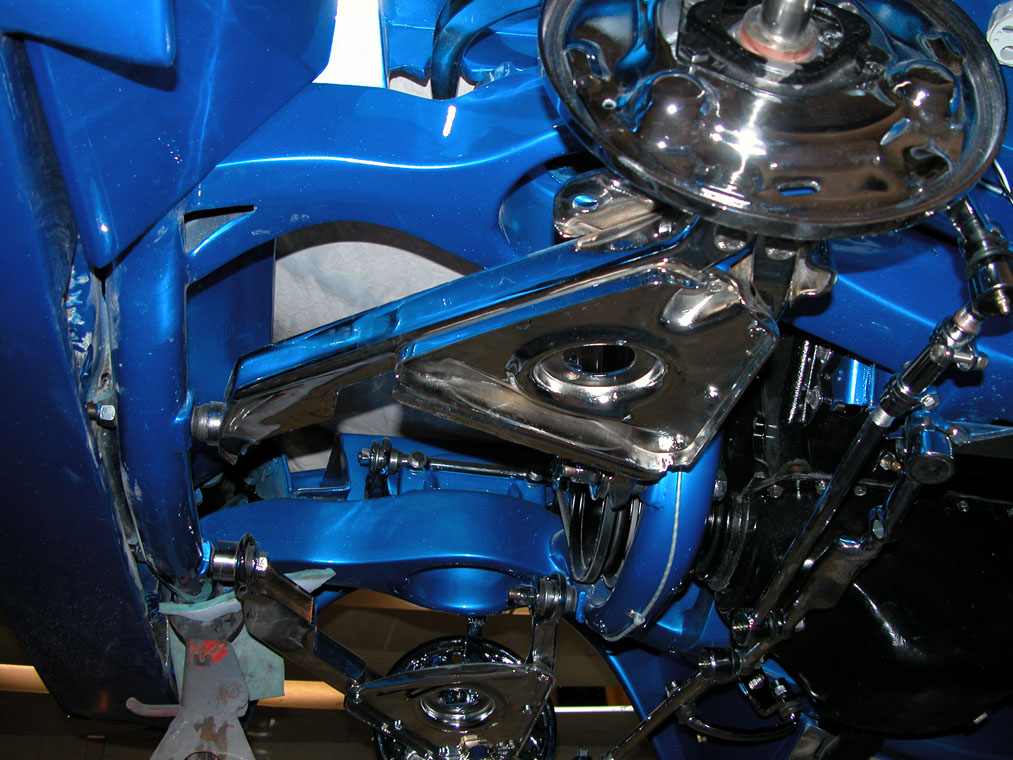
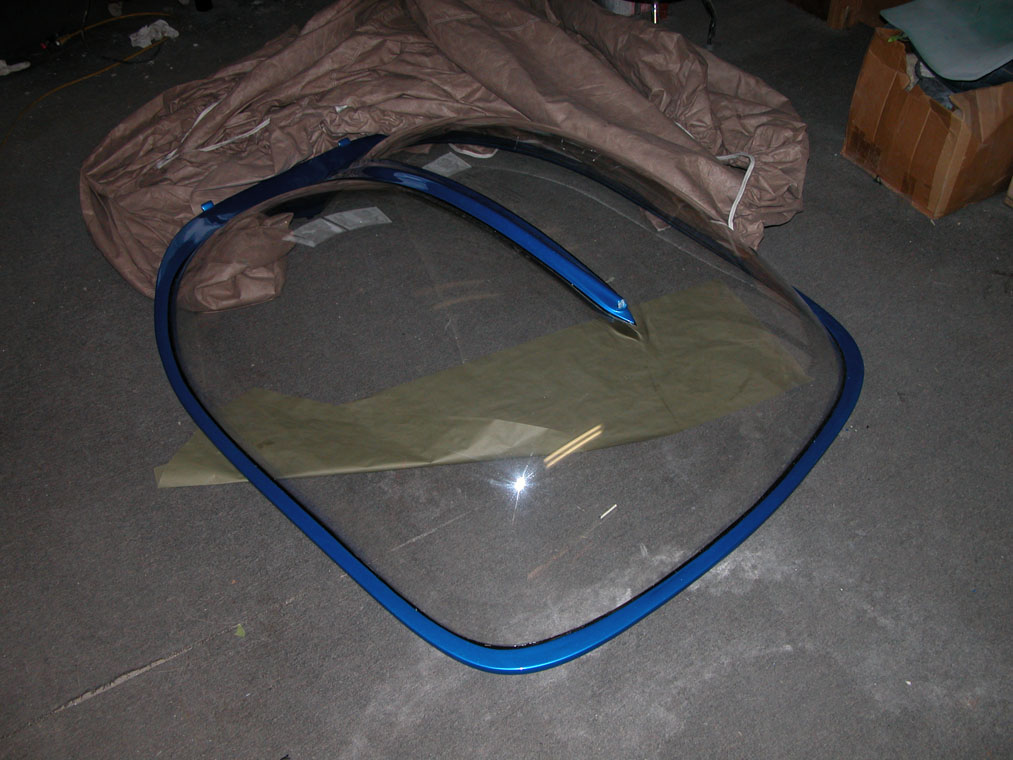
Some things endure in the automotive world, usually those where the design was restrained and the execution was impeccable. More than four decades after its creation, the Predicta stands as a timeless reminder of the best elements of the custom car world. Graceful and elegant, the Predicta continually defined for itself and its builder a standard of excellence seldom matched.
